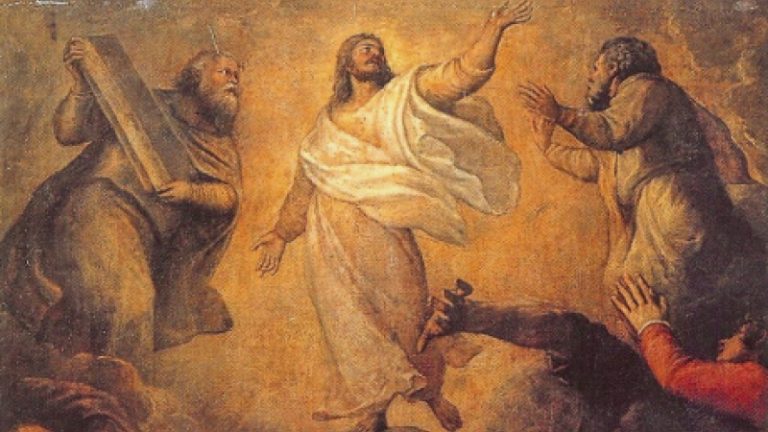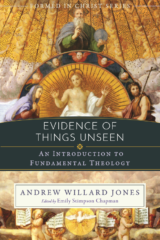By Andrew Willard Jones and Louis St. Hilaire
Dr. Andrew Jones holds a PhD in Medieval History from Saint Louis University and is an expert on the Church of the High Middle Ages. He is the author of Before Church and State: A Study of Social Order in the Sacramental Kingdom of St. Louis IX and the pioneer of the Formed In Christ series of faith formation texts, as well as the author of several books in this series.
Louis St. Hilaire is the co-author of Evidence of Things Unseen: An Introduction to Fundamental Theology and translator of The Literal Exposition of Isaiah: A Commentary by St. Thomas Aquinas (forthcoming from Emmaus Academic). A graduate of Franciscan University of Steubenville, he works as a web developer and digital editor for the St. Paul Center.

Every human person desires to know God. Every human heart longs for communion with him. Whether we recognize that longing or not, the desire for happiness that we all feel is really a desire for God. It’s a desire to be in a relationship with the One who made us and who is the source of all good things. St. Augustine (354–430) expressed this idea in his Confessions:
You have made us for yourself, O Lord, and our hearts are restless until they rest in you.
St. Augustine’s words are beautiful (and true!), but at first glance, they might not correspond to our experience of the world around us. After all, plenty of people exist who don’t act interested in God but still seem happy. They laugh. They have friends. They do important things. If a relationship with God is the key to happiness, how does the Church account for those people?
In order to answer this question, it’s important that we first understand what the Church means when it teaches that happiness is found only in communion with God. When it says that, it’s making a statement about what humanity is—about what type of creatures we are. The Church’s anthropology, or understanding of the human person, is the basis of its understanding of happiness. In order to understand what makes us truly happy, we need to understand what we are.
This isn’t just true of human beings. A good way to understand anything is to start with its origin. For example, if we want to understand a work of art or architecture, we need to know about the time and place of its creation. We also need to know something about the creator—where he came from or what type of person he was. Consider the Great Pyramids in Egypt. With just a glance, we know the pyramids are astonishing. We can appreciate their grandeur simply by looking at them.
If we want to progress past simple appreciation, however, and truly understand what the pyramids are, we must ask questions, such as: Who built them? When were they built? And most importantly, why were they built? Through answering these sorts of questions—questions that concern the origin of the object’s creation—we move into the realm of understanding.
What’s true for architecture is also true for the human person. If we want to understand who we are and why the Church says we can find true happiness only through a relationship with God, then we need to understand our origin. We need to go back to “the beginning.”
Loving God starts with knowing him, but, thanks to the Fall, that’s not as easy as it was supposed to be. Because of sin, we no longer walk in paradise with God, so our knowledge of him doesn’t come effortlessly. We have to work at it. If we do, though, we’ll find that God still makes himself known in a number of ways.
First, he shows himself through his creation. This is called Natural Revelation (CCC 32). God made the world and everything in it. Although only the human person is made in his image, all of creation in some way still reveals something about its maker. By studying the world—its contents and its properties—we can use our reason to discover important truths about God and his nature.
God, however, doesn’t just ask us to look for him in the world using reason. He also comes to us, revealing himself directly to humanity. This is called Divine Revelation. There are two phases of Divine Revelation. In the Old Testament, we learn how God revealed himself to the people of Israel and established a covenant with them. Then, “when the time had fully come” (Gal 4:4), God revealed himself totally to humanity by sending his only Son, Jesus Christ, to become a man. We call this the Incarnation. The Incarnation is the ultimate example of God coming to us, making himself totally known to us, and asking us to join him in happiness. The events surrounding the Incarnation are recorded in the New Testament.
In Evidence of Things Unseen, explore God’s revelation to mankind and how the content of this revelation is transmitted to us in Scripture and Tradition. This introduction to fundamental theology answers the question: how do we know who God is?
The Formed in Christ series is a solid and faithful resource that provides a thorough treatment of the Catholic faith and various branches of theology. Whether you're an armchair theologian wanting to fill in the gaps of your religious education or an educator who wants to implement a rigorous and orthodox curriculum, you'll find your answer in the Formed in Christ series.
You Might Also Like

The Formed in Christ series is a solid and faithful resource that provides a thorough treatment of the Catholic faith and the various branches of theology. Evidence of Things Unseen: An Introduction to Fundamental Theology explores God’s revelation to mankind and how the content of this revelation is transmitted to us in Scripture and Tradition. This introduction to fundamental theology answers the question: how do we know who God is?